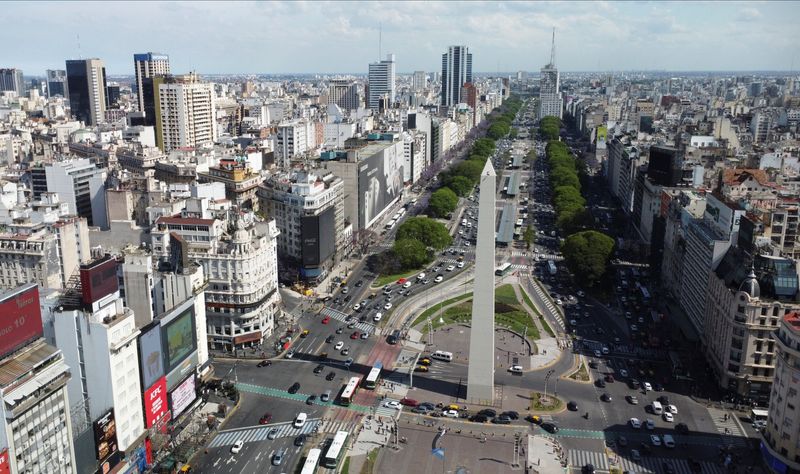Argentina’s economy is facing significant challenges as it continues to contract. In the third quarter of 2024, the country’s gross domestic product (GDP) is projected to have shrunk by 2.6% compared to the same period last year, marking the sixth consecutive year-on-year decline. However, there is a slight glimmer of hope as the economy appears to have expanded relative to the previous quarter, indicating a potential end to a technical recession that has persisted since the end of 2023. A recent Reuters poll involving analysts suggests that following a 1.7% contraction in the second quarter and a significant 5.1% drop in the first quarter, this year’s performance continues to be a mixed bag.
Economic activity has shown signs of strain, with September reporting a year-on-year decline of 3.3% and figures from August and July also showing negative growth of 3.7% and 1%, respectively. These statistics reflect a decelerating industrial sector amid austerity measures introduced by President Javier Milei’s administration. His government has implemented substantial reductions in social spending and initiated extensive layoffs in the public sector, contributing to the economic slowdown. Although high inflation, which reached a staggering annual rate of 166%, is now beginning to moderate, the repercussions of these austerity measures have pushed poverty levels above 50%, complicating the social fabric of the nation.
While the Milei administration has received accolades for its efforts to stabilize the country’s finances after previous years of excessive spending, reviving the economy remains a crucial test of its policies and popularity. The measures taken have provided temporary relief to the markets, and financial metrics suggest a level of confidence in the government’s direction. Nonetheless, the ongoing contraction poses a dilemma for Milei, who must balance fiscal reform with the socioeconomic needs of a population grappling with rising poverty and inflation.
Eugenio Mari, the chief economist at Fundacion Libertad y Progreso, posits that there is a chance for growth in the upcoming quarter, estimating a potential increase of about 3% from the previous quarter. Should this uptick occur, it would break a streak of three consecutive declining quarters, signaling a possible shift in the economic landscape. Mari, cautious yet hopeful, expressed the desire for this trend to strengthen as the nation moves into 2025, indicating a need for sustained policies that could stabilize and revitalize the economy.
The Argentine government’s outlook is optimistic, as it forecasts a GDP growth of 5% in the next fiscal year according to its draft budget. This projected growth underscores the administration’s commitment to economic recovery and lays out ambitious goals for revitalizing Argentina’s economy in the long term. As developments unfold, the release of the third-quarter GDP data by INDEC will provide further clarity on the economic trajectory and serve as an important indicator of the success of Milei’s reforms.
In conclusion, while Argentina’s economy has shown a slight recovery in the short term, persistent year-on-year contractions present a stark challenge for President Javier Milei’s administration. The transition from austerity measures to sustainable growth will be critical, and ongoing poverty levels highlight the need for balanced economic policies. As the government aims for a recovery in the next fiscal year, the expectations of analysts and economists will be closely monitored, as will the social implications of these financial strategies on the population as a whole.

